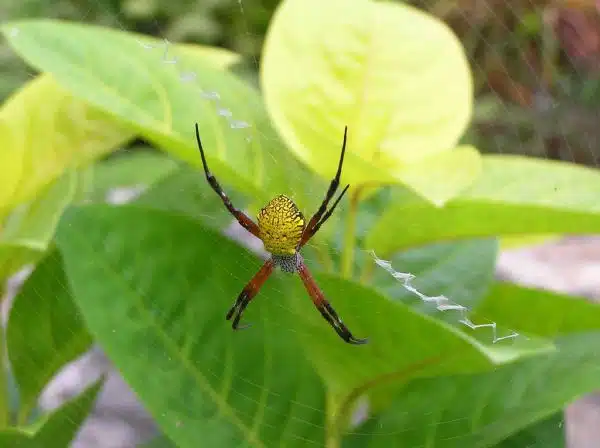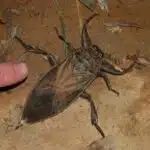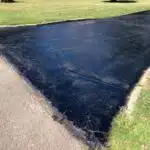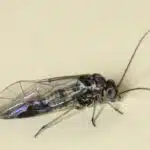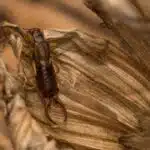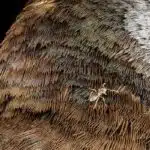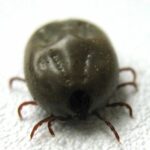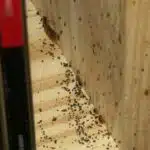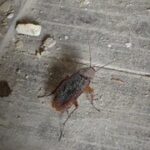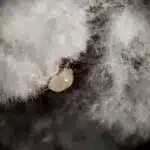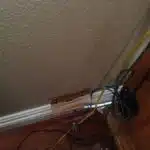Spiders are one of the most common household pests that can be found all over the world. While they play an important role in controlling the insect population, their presence in homes can be unsettling for many people. Some species of spiders can even be venomous, making it imperative to get rid of them as soon as possible. If you are looking for a natural and effective way to rid your home of these eight-legged creatures, then this article is for you.
In this article, we will discuss some natural ways to get rid of spiders from your home without using harmful chemicals or pesticides. We understand that many people have a desire to serve their community by protecting the environment and reducing their carbon footprint. By implementing these natural methods, not only will you eliminate unwanted spiders from your home but you will also contribute towards preserving the ecosystem and promoting sustainability. So if you’re ready to take matters into your own hands and get rid of those creepy crawlers once and for all, read on!
Understanding Spider Behavior And Habits
Did you know that there are over 40,000 species of spiders in the world? These arachnids have a unique anatomy that allows them to spin webs and hunt prey. Understanding spider behavior is essential to effectively controlling them in your home.
One important aspect of spider reproduction behavior is their mating habits. Male spiders often approach females with caution as they can be aggressive and even cannibalistic towards their potential mates. Once the male successfully approaches the female, he will deposit sperm into her reproductive tract using his specialized pedipalps. The female then stores the sperm until she is ready to lay eggs.
Spider anatomy also plays a role in their behavior and habits. Spiders have eight legs and two main body parts: the cephalothorax and abdomen. Their legs are covered in tiny hairs called setae, which help them sense their environment and capture prey. Their ability to climb walls and ceilings comes from tiny hooks on their feet called scopulae, which allow them to adhere to surfaces like Velcro.
Understanding spider anatomy and reproduction behavior can help you identify where they may be hiding in your home. In the next section, we will discuss how to identify common spider species found in homes.
Identifying Common Spider Species In Homes
Before discussing how to get rid of spiders from your home, it’s important to understand the types of spiders that commonly inhabit houses. Despite common spider myths, most spiders found indoors are harmless and play a crucial role in controlling pests like flies and mosquitoes. However, it’s still essential to identify the species present to determine if they pose any risk.
A few common spider species found in homes include the house spider, wolf spider, cellar spider, and jumping spider. The house spider is typically small and brown with a rounded abdomen and long legs. Wolf spiders are larger with hairy bodies and long legs designed for hunting prey. Cellar spiders have long, thin legs and are often found in basements or crawl spaces. Jumping spiders are small with colorful markings and excellent eyesight.
To accurately identify these species or others that may be present in your home, there are several useful spider identification resources available online. These resources can provide you with detailed information on physical characteristics, behavior patterns, habitat preferences, and potential risks associated with each species.
Understanding the types of spiders inhabiting your home can help you make informed decisions about pest control measures and dispel any myths or fears associated with these fascinating arachnids. With this knowledge at hand, let’s move on to creating a clean and uninviting environment for spiders.
Creating A Clean And Uninviting Environment For Spiders
Decluttering is an effective way to reduce the presence of spiders in the home, as it eliminates hiding places and potential nesting sites. It is also important to seal any cracks or crevices around the house, as these can be potential entry points for spiders. Additionally, keeping windows and doors closed when not in use can help to prevent spiders from entering the home. Finally, removing webs, egg sacs, and any other spider debris regularly is an effective means of discouraging spiders from inhabiting the home.
Decluttering
Minimalism in decluttering can significantly reduce the presence of spiders in your home. Cluttered spaces provide hiding spots for these arachnids, making it easier for them to nest and multiply. By getting rid of unnecessary items and keeping only the essentials, you create a clean and uninviting environment for spiders. Decluttering also makes cleaning more manageable, allowing you to reach every nook and cranny where spiders may hide.
Apart from its physical benefits, decluttering also has emotional benefits that can contribute to a spider-free home. Studies show that cluttered spaces cause stress and anxiety, which can attract pests such as spiders. Clearing out clutter helps reduce stress levels, creating a more peaceful living space. A calm environment is less likely to attract spiders since they thrive in chaotic places.
To effectively declutter your home, start with one room at a time and sort items into three categories: keep, donate/sell, or throw away. Be ruthless when deciding what to keep since every item must have a designated place in your home. Once you have decluttered your space, make sure to maintain it by regularly organizing and deep cleaning. This routine will not only prevent spider infestations but also create a comfortable living space that promotes overall well-being.
In conclusion, minimalism in decluttering has several benefits that help reduce the presence of spiders in your home. Not only does it create a clean and uninviting environment for these creepy crawlers, but it also reduces stress levels that attract them. Embrace the art of decluttering today and enjoy a spider-free living space!
Sealing Cracks
To create a clean and uninviting environment for spiders, sealing cracks in your home is an essential step. Spiders can squeeze through even the tiniest gaps, allowing them to re-enter your home after you have decluttered and cleaned it. To prevent this from happening, it is important to identify all potential entry points and seal them off using effective caulking techniques.
Sealing cracks not only keeps spiders out but also prevents other pests from entering your home. By blocking entry points, you decrease the likelihood of infestations and protect your living space from potential damage caused by pests. It is crucial to regularly inspect and maintain sealed areas since wear and tear can cause caulking to crack or peel over time.
Preventing re-entry by sealing cracks is an important aspect of creating a spider-free environment in your home. Identifying potential entry points and effectively sealing them off using caulking techniques not only keeps spiders out but also protects against other pests. Make sure to regularly inspect and maintain sealed areas to ensure their effectiveness in keeping pests at bay.
Using Essential Oils To Repel Spiders
Just as a spider weaves its intricate web, we too have the power to create our own webs of protection. Essential oils can be used as a natural spider repellent by creating a barrier that spiders find unappealing. However, it is crucial to use essential oil safety guidelines while doing so.
DIY oil blends are an effective way to fend off spiders without resorting to harmful chemicals. Cedarwood, peppermint, and tea tree oils are three essential oils that spiders detest. These oils can be mixed with water or carrier oils such as coconut or almond oil to make homemade sprays and lotions. By using DIY oil blends, you not only avoid harsh chemicals but also save money in the long run.
Alternative natural spider repellents include vinegar and citrus scents such as lemon and orange. A mixture of equal parts vinegar and water can be sprayed around windowsills, doorways, and other entry points for spiders. Citrus peels placed strategically around the house can also keep spiders at bay. Incorporating these simple yet effective methods into your daily routine can help you reclaim your home from unwanted eight-legged guests.
To take things up a notch, making a natural spider repellent spray is a great way to ensure that your home stays spider-free. Mix 10-15 drops of any combination of cedarwood, peppermint, or tea tree essential oils with water in a spray bottle and shake well before use. Spray this mixture around baseboards, windowsills, doorways, and any other areas where spiders may enter your home. Remember to refresh the spray every few days for maximum effectiveness in keeping those little critters at bay!
Making A Natural Spider Repellent Spray
A DIY spider spray is an effective and natural way to repel spiders from your home. This type of spray can be easily made using ingredients that are commonly found in most households, such as peppermint oil and vinegar. Peppermint oil is a natural spider deterrent that works by overwhelming their sense of smell, while vinegar helps to repel spiders due to its acidic nature.
To make the DIY spider spray, mix equal parts of water and vinegar in a spray bottle. Add 10-15 drops of peppermint oil and shake the bottle well before use. Spray the solution around windows, doors, and other areas where spiders may enter your home. You can also use this spray directly on any spiders you see in your home to deter them from returning.
Using natural spider deterrents like cedar chips or lavender around your home is another effective way to keep spiders away. Cedar chips have been used for centuries as a natural insect repellent due to their strong scent that is toxic to insects but harmless to humans. Lavender has a similar effect on insects, including spiders, making it an excellent alternative for those who don’t like the smell of cedar.
Transition: While DIY sprays are effective in keeping spiders away, spreading cedar chips or lavender around your home can further enhance their effectiveness.
Spreading Cedar Chips Or Lavender Around Your Home
Imagine entering your home after a long day, only to find it crawling with spiders. It’s an unsettling feeling that no one wants to experience. Fortunately, there are natural remedies that can help you keep these creepy crawlies at bay. One of the most effective ways to repel spiders is by spreading cedar chips or lavender around your home.
When it comes to using natural remedies for spider prevention, both cedar chips and lavender have their unique benefits. However, many experts believe that cedar chips are the better option as they contain natural oils that spiders find repulsive. These oils have been proven to work against several types of insects and pests, including spiders.
To make DIY cedar chip sachets for spider prevention, all you need is some cheesecloth and a handful of cedar chips. Simply wrap the cedar chips in the cheesecloth and tie them off with a piece of string or ribbon. Then place the sachets in areas where spiders are likely to enter or congregate, such as windowsills and corners of rooms. By doing so, you’ll create an inhospitable environment for spiders and discourage them from entering your home.
As effective as cedar chips may be for spider prevention, some people prefer using lavender due to its pleasant scent. If you choose to use lavender instead of cedar chips, simply sprinkle dried lavender around your home or consider making lavender sachets in the same way as the cedar chip sachets above. Either way, by taking these natural pest control measures into consideration, you’ll be able to enjoy a spider-free home without resorting to harmful chemicals or pesticides.
Transition: While placing cedar chips around your home is effective in repelling spiders, another simple but effective method is placing citrus peels near spider-prone areas.
Placing Citrus Peels Near Spider-Prone Areas
Placing citrus peels near spider-prone areas is a simple and effective way to get rid of spiders naturally. Citrus fruits such as lemons, oranges, and grapefruits contain high levels of citric acid, which is known to repel spiders and other pests. This natural remedy is not only safe for humans and pets but also environmentally friendly.
To use this method, start by eating your favorite citrus fruit and then save the peel. Once you have enough peels, place them in areas where spiders tend to appear, such as windowsills, doorways, or corners of the room. You can also try rubbing the peels along baseboards or other surfaces where spiders may travel.
In addition to repelling spiders, using citrus peels can also help repel other pests like ants and flies. Instead of throwing away citrus peels after eating your fruit, consider repurposing them in your home for natural pest control. Not only will you be saving money on expensive pest control products but also reducing waste in the environment.
Transitioning into the next section about using vinegar to clean your home and deter spiders – Another natural way to get rid of spiders from your home is by using vinegar. This household item has many uses beyond cooking and can effectively clean surfaces while deterring spiders from returning. With these simple tips, you can keep your home spider-free without resorting to harmful chemicals or expensive pest control services.
Using Vinegar To Clean Your Home And Deter Spiders
Placing citrus peels near spider-prone areas is an effective way to keep spiders away from your home. However, there are other natural methods you can use to get rid of these arachnids. One such method is using vinegar to clean your home and deter spiders. Vinegar has been used for centuries as a natural cleaning agent due to its acidic properties.
Benefits of Vinegar Vinegar is a versatile substance that can be used in many ways around the home. When it comes to pest control, vinegar can help repel spiders due to its strong odor that they find unpleasant. Additionally, vinegar is affordable and readily available at most grocery stores, making it an accessible option for those looking for natural pest control solutions.
DIY Vinegar Cleaning Solutions To use vinegar as a spider deterrent, mix equal parts water and white vinegar in a spray bottle and apply it to areas where spiders are likely to enter or reside, such as windowsills and doorways. You can also add essential oils such as peppermint or tea tree oil to the mixture for added effectiveness. Another option is using undiluted vinegar to wipe down surfaces in your home, eliminating any spider webs or eggs that may be present.
How Vinegar Can Help with Pest Control In addition to deterring spiders, vinegar can also help with controlling other pests in your home. For example, it can repel ants by disrupting their scent trails and masking odors that attract them. It can also be used as a natural disinfectant, killing bacteria and viruses that may attract pests like cockroaches. By incorporating vinegar into your cleaning routine, you can create a less hospitable environment for pests in your home.
By using vinegar as part of your pest control strategy, you are taking a step towards creating a safer and more comfortable living space for yourself and others in your household. However, there are still other measures you should take to prevent spiders and other pests from entering your home. One such measure is sealing cracks and openings in your home, which we will discuss in the next section.
Sealing Cracks And Openings In Your Home
- Sealing doorways is a key step in preventing spiders from entering your home, as this is one of the most common points of entry.
- Sealing windows and other openings with screens can also help to keep spiders out of your home.
- Inspecting and sealing any cracks or gaps in the foundation of your home is also an important part of preventing spiders from entering.
- Weatherstripping around doors and windows can also help to keep spiders out of your home.
- Replacing any broken or damaged window screens is important in order to keep spiders and other pests out of your home.
- Ensuring that all doors and windows are closed tightly when not in use is also a key step in preventing spiders from entering your home.
Sealing Doorways
Have you been noticing an increase in the number of spiders in your home lately? It’s time to take action and prevent them from entering your living space. One effective way to do this is by sealing doorways, which can greatly reduce the chances of spiders entering your home.
The benefits of sealing doorways go beyond just keeping out spiders. It can also improve energy efficiency in your home by preventing drafts, ultimately reducing your utility bills. There are various types of sealants that you can use for this purpose, such as weatherstripping or door sweeps. These sealants can be easily installed and are available at most hardware stores.
When deciding on what type of sealant to use, it’s important to consider factors like durability and effectiveness. For instance, silicone-based sealants are a popular choice because they are long-lasting and water-resistant. However, it’s best to consult with a natural pest control expert before making any decisions as they may have more knowledge on what specific type of sealant will be most effective for spider prevention.
In conclusion, sealing doorways is a great way to prevent spiders from entering your home naturally. With the right type of sealant and proper installation, you’ll not only keep unwanted pests out but also improve energy efficiency in your home. Don’t let spiders take over your living space – take action now!
Sealing Windows
As a natural pest control expert, I highly recommend sealing cracks and openings in your home to prevent pests from entering. Aside from doorways, windows are also common entry points for spiders and other insects. Therefore, it’s important to ensure that your windows are properly sealed.
One effective way to seal windows is through caulking techniques. This involves filling gaps and cracks around the window frame with a waterproof sealant. Not only does this prevent pests from entering, but it can also improve energy efficiency by reducing drafts.
Before applying any sealant, make sure to clean your windows thoroughly. Window cleaning can help remove dirt and debris that may interfere with the adhesion of the sealant. It’s also important to choose the right type of caulk for your window material – silicone-based caulk works well for most types of windows. With proper sealing techniques, you can enjoy a pest-free home while saving on energy costs.
Sealing Foundations
As natural pest control experts, we understand the importance of sealing cracks and openings in your home to prevent pests from entering. One area that is often overlooked is the foundation of your home. Waterproofing basements and repairing damaged siding can help keep pests out and prevent water damage.
Sealing foundations involves filling any gaps or cracks in the foundation with a waterproof sealant. This prevents pests from crawling through small openings and entering your home. It also helps to prevent water from seeping into your basement, which can cause mold growth and attract pests such as termites.
To properly seal your foundation, it’s important to thoroughly inspect it for any cracks or gaps. Once you’ve identified problem areas, clean them thoroughly before applying a waterproof sealant. Consider using an epoxy injection system for larger cracks as it provides a stronger, long-lasting solution. By taking these steps to properly seal your foundation, you can protect your home from both pests and water damage.
Removing Clutter And Debris From Your Living Space
Eliminating clutter and debris from your living space is an essential step towards getting rid of spiders naturally. Decluttering benefits you in several ways, including reducing the areas where spiders can hide and breed. Spider webs are easily visible on clutter-free surfaces, making it easier for you to spot them and eliminate them before they get out of control. As a natural pest control expert, I recommend decluttering your home as the first step in eliminating spider infestations.
Organizing techniques are also useful in preventing spider infestations. Store items in airtight containers to prevent spiders from nesting inside them. Use vacuum cleaners with HEPA filters to remove dust and spider webs from corners and crevices. Also, avoid stacking clothes or any other item against walls or in corners as this creates dark spaces that spiders love.
By decluttering and organizing your living space, you not only get rid of spiders but also create a clean and healthy environment for yourself and your family. You will find it easier to locate items when everything has its designated space, which reduces stress levels associated with messy homes. Make tidying up a habit by setting aside some time every day to ensure that everything is in its place.
Creating an organized living space can seem daunting at first, but with these tips, you’ll be well on your way to achieving a spider-free home. The next section will cover how using sticky traps can be an effective method of catching spiders without harming them or using harmful chemicals in your home.
Using Sticky Traps To Catch Spiders
According to a recent survey, spiders are one of the most feared pests in homes. While some species like house spiders help control other insects, they can quickly become a nuisance when their populations grow out of control. DIY sticky traps are one eco-friendly spider control method that won’t harm them or the environment.
To make your own sticky traps at home, you will need a few basic materials. Start by cutting a piece of cardboard into small squares and applying a layer of non-toxic glue or adhesive tape on top. Next, strategically place these traps along walls, corners, and other areas where you have seen spiders before.
DIY sticky traps work by trapping spiders as they crawl across the surface and preventing them from moving further. While this may not eliminate all spiders from your home completely, it can significantly reduce their numbers over time. Remember to replace your traps regularly and dispose of any trapped spiders in an eco-friendly way.
When vacuuming regularly to capture spider egg sacs, be sure to use a vacuum with a high-efficiency particulate air (HEPA) filter to prevent releasing allergens back into the air. Additionally, focus on areas where eggs and webs tend to accumulate such as corners, under furniture and behind curtains. By adding this step to your natural pest control routine along with using DIY sticky traps, you can effectively keep spider populations under control without harming them or the environment.
Vacuuming Regularly To Capture Spider Egg Sacs
One of the most effective ways to keep spider populations under control is regular vacuuming. By vacuuming frequently, you can capture spider egg sacs before they have a chance to hatch and release dozens of baby spiders into your home. Spider egg sacs are small and hard to spot, so be sure to pay close attention when vacuuming areas where spiders are commonly found, like corners and dark spaces.
When vacuuming for spider egg sacs, it’s important to use a high-powered vacuum with a HEPA filter. This will ensure that any captured spiders or eggs are safely contained and won’t escape back into your home. Additionally, consider using natural pest control methods in conjunction with vacuuming for optimal effectiveness. Alternative methods such as essential oils or diatomaceous earth can repel spiders from entering your home in the first place.
Vacuuming regularly not only captures spider egg sacs but also removes other debris that might attract spiders in the first place. By keeping your home clean and tidy, you’re creating an environment that is less hospitable to pests like spiders. In the next section, we’ll explore how encouraging natural spider predators, such as birds and cats, can also help keep spider populations under control.
Encouraging Natural Spider Predators, Such As Birds And Cats
Encouraging natural spider predators is an effective way to control their population without using harmful chemicals. Birds, in particular, are known for their ability to hunt and eat spiders. By setting up bird feeders in your yard or near your home, you can attract birds that will help keep the spider population under control. However, it is important to note that certain types of birdseed may also attract other pests, such as squirrels or rodents. Therefore, it is best to consult with a pest control expert before choosing the type of birdseed to use.
Cats are also well-known for their hunting abilities and can be trained to catch spiders indoors. Providing cat toys that mimic the movement of spiders can help train your cat to hunt them down. However, it is important to supervise your cat during these activities and make sure they do not ingest any harmful substances or get injured while hunting.
In addition to encouraging natural predators, keeping your home clean and clutter-free can also deter spiders from entering and residing in your living spaces. Eliminating hiding spots such as piles of clothing or boxes can reduce the presence of spiders indoors. Regularly cleaning corners and cracks where spiders may lay eggs can also help prevent infestations.
For severe infestations or if natural methods do not work, seeking professional help from a pest control expert may be necessary. They have the expertise and tools necessary to identify the species of spider and provide effective treatment options that are safe for you and your family.
Seeking Professional Help For Severe Infestations
You have tried everything within your power to eliminate spiders from your home, but the infestation seems to be getting worse. Don’t despair, as there is hope yet. Seek professional help by hiring exterminators who are trained and experienced in spider control methods.
Exterminators use a range of techniques to get rid of spiders from your home, including chemical sprays, baits, and traps. They can also identify the root cause of the infestation and provide recommendations on how to prevent it from happening again. While DIY spider control methods work for small infestations, severe cases require the expertise of professionals.
When hiring exterminators, choose a reputable company that uses eco-friendly products and practices ethical pest control. Ask for references and read reviews before making a decision. Remember that while it may cost more initially to hire professionals, it will save you time and money in the long run by preventing future infestations.
By seeking professional help for severe spider infestations, you are taking an important step towards ensuring a safe and healthy living environment. With the help of experts, you can eliminate spiders from your home once and for all. However, this is not where your efforts end – maintaining a regular spider prevention routine for long-term success is just as crucial as getting rid of them in the first place.
Maintaining A Regular Spider Prevention Routine For Long-Term Success
Maintaining a regular spider prevention routine is essential to ensure that your home remains free of spiders in the long run. There are several steps you can take to keep spiders at bay without using harmful chemicals. First, it is important to clean your home regularly and get rid of any webs or egg sacs that you find. Make sure to vacuum all areas of your home, paying special attention to corners, crevices, and dark spaces.
Another effective way to prevent spiders from entering your home is by spider-proofing your furniture. This involves placing sticky traps around the legs of your furniture and sealing any cracks or gaps with caulk or sealant. Spiders often use these gaps as entry points into your home, so making sure that they are sealed off can go a long way in keeping them out.
In addition to these measures, you can also use natural spider deterrent plants around your home. Some plants like lavender, peppermint, and eucalyptus have natural oils that repel spiders and other insects. Placing these plants around windowsills, doorways, and other entry points can help discourage spiders from entering your home in the first place.
- Regularly dust and sweep hard-to-reach areas such as ceilings
- Place cedar chips or sachets in closets
- Use vinegar and water solution to clean surfaces
By incorporating these simple steps into your regular cleaning routine, you can effectively prevent spiders from taking up residence in your home for good. Remember that maintaining a consistent spider prevention routine is key to ensuring that your efforts pay off in the long term. So keep up with these practices, and enjoy a spider-free living space!
Conclusion
Understanding the behavior and habits of spiders is essential in creating a clean and uninviting environment for them. Identifying common spider species found in homes can help in developing effective natural remedies to repel them. Essential oils like peppermint, citrus, and lavender are known to be effective in keeping spiders away from your home.
Making a natural spider repellent spray using vinegar, water, and essential oils is an easy way to naturally get rid of spiders. Vacuuming regularly helps capture spider egg sacs before they become a problem. Encouraging natural spider predators like birds and cats can also help keep your home spider-free.
While these natural methods are effective, severe infestations may require professional help. Maintaining a regular spider prevention routine can ensure long-term success in keeping your home free of these eight-legged creatures. As a natural pest control expert, it’s important to remember that spiders have their place in the ecosystem but should not invade our living spaces. So let’s work together towards creating a safe and healthy environment for both humans and spiders alike!
Image Credits
- “Beautiful Yellow Spider” by cudinski (featured)

